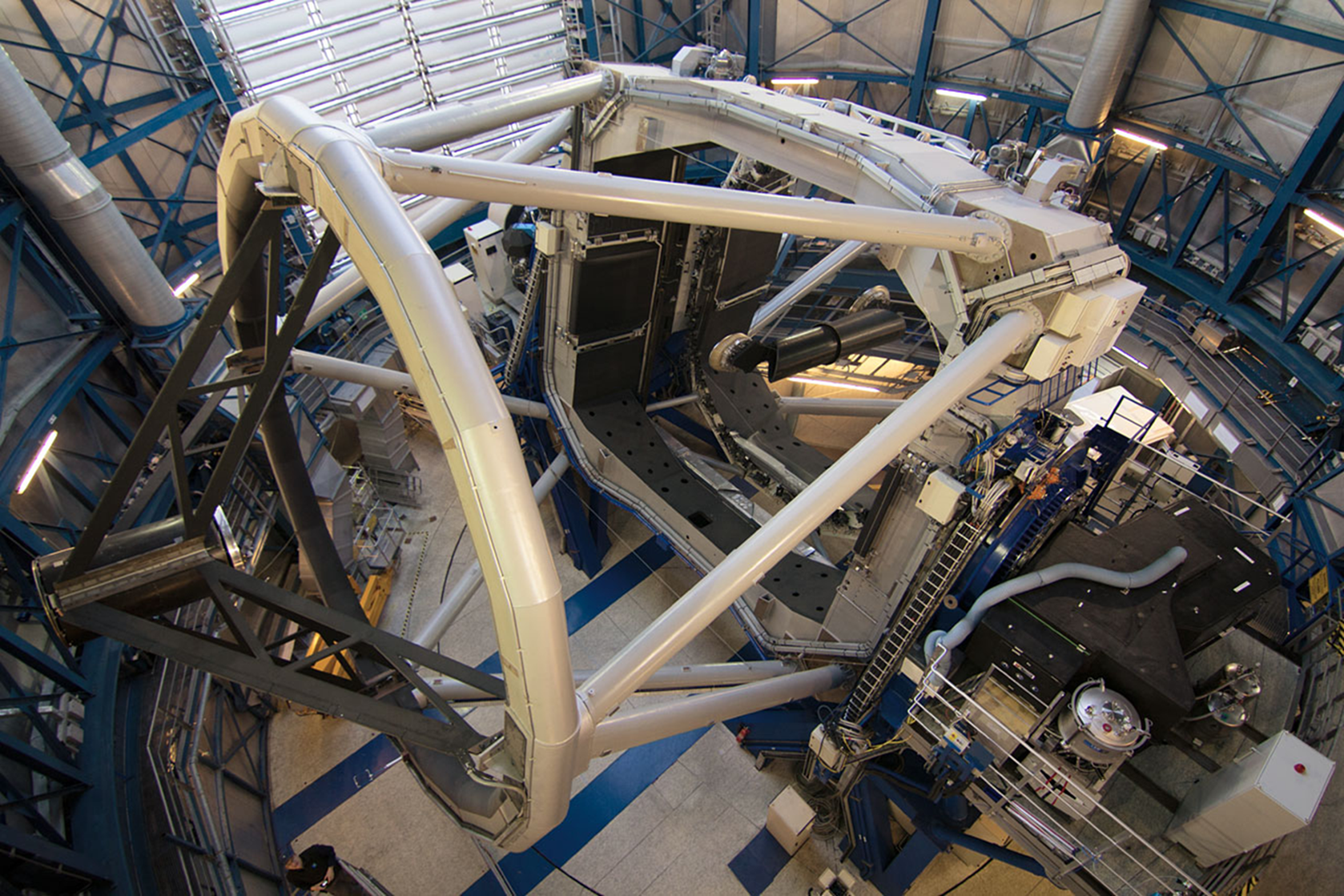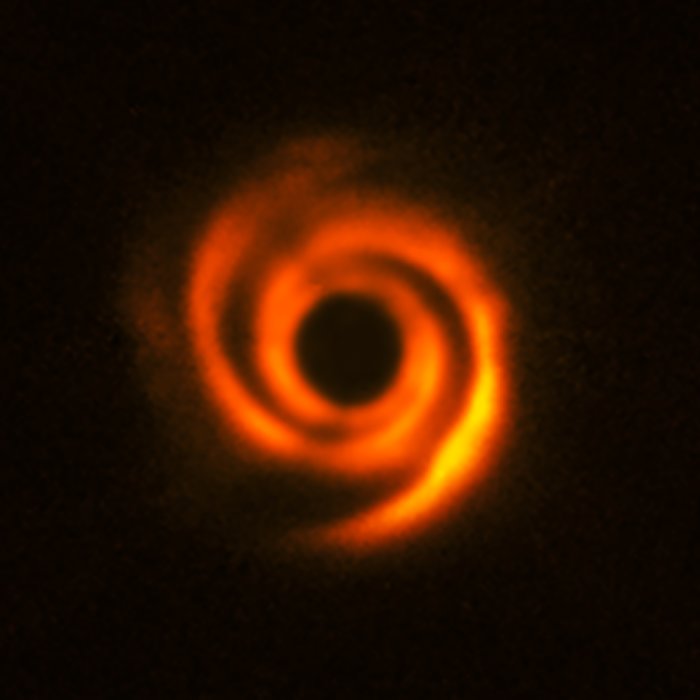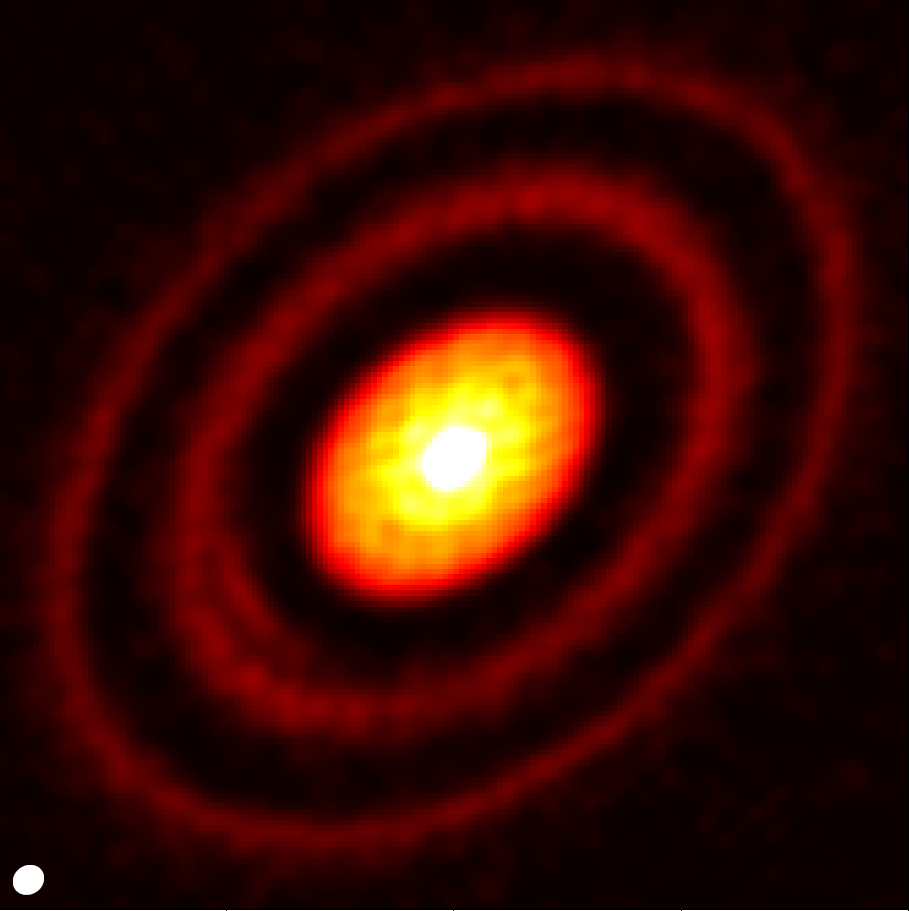Project 1.1: Observational investigations of proto-planetary discs
Planet formation in the gas and dust disks around young stars is a most important process in extrasolar planet research because this phase defines the planet properties and the architecture of the resulting planetary systems. This project aims to clarify the complex planet formation with new high resolution maps of proto-planetary disks in scattered light from polarimetric observations with SPHERE – VLT and continuum and line-emission data from ALMA.
SPHERE is a special camera system attached to the 8.2m VLT telescope unit 3 of the European Southern Observatory (ESO) in Chile, which is optimized for the investigation of extra-solar planetary systems, because it provides the required extreme angular resolution and dynamic range to see very faint objects, like planets, near bright stars. Figure 1 shows the SPHERE instrument attached to the VLT telescope. SPHERE was built by a large European consortium including NCCR members from the Geneva University and ETH Zurich.

Fig. 1. VLT telescope 3 with the SPHERE instrument in the black box on the lower right (ESO image)
SPHERE can image the scattered light from the disk, which originates from the star and is scattered by very small dust particles (size about micro-meter) at the surface of the disk. The scattered light is polarized, while the direct light from the star is not polarized. A measurement of the polarization signal shows therefore only the faint, polarized light from the circumstellar disk, while the unpolarized direct light from the extremely bright star in the center is extinguished. With this method, it is possible to see the structures of the protoplanetary disks. The images show gaps, rings and spirals, which are probably the results of embedded forming planets (Figure 2).

Fig. 2. A circumstellar disk seen in scattered light with SPHERE (ESO image, T. Stolker)
However, just considering our scattered light data yields ambiguous interpretations and complementary information from other wavelength bands are required for a better understanding of the disk structures.
For this reason we combine our analysis with data from ALMA, the Atacama Large Millimeter Array in Chile, an interferometer consisting of more than 50 radio antennas for the observations of mm-waves (Figure 3). ALMA is also an international Infrastructure, where we can get observations through the European Southern Observatory.

Fig. 3. Antennas of the ALMA Telescope located in Chile (ESO image)
ALMA can look essentially through the disk and it sees the thermal radiation of relativly large dust particles (size about 1 cm). Because, these particles have a significant mass, they are not coupled to the disk gas and settle in the mid-plane of the disk. ALMA high resolution observations of disks show often narrow rings where these large particles accumulate (Fig. 4). The accumulation of particles could lead to the formation of planets and the gaps between the rings could be caused by circling, new formed planets. It is unclear, whether this hypothetical interpretation is correct. We are trying to clarify this in collaboration with experts from Projects 1.2, 1.4 and 1.6, by comparing our observations with model calculations for disks, with results from the analysis of the composition of solar system meteorites, and with the laboratory measurements of icy dust particles.
Fig. 4: The emission of large, mm-sized dust particles in a circumstellar disk as seen by ALMA
(G. Guidi and ALMA).


